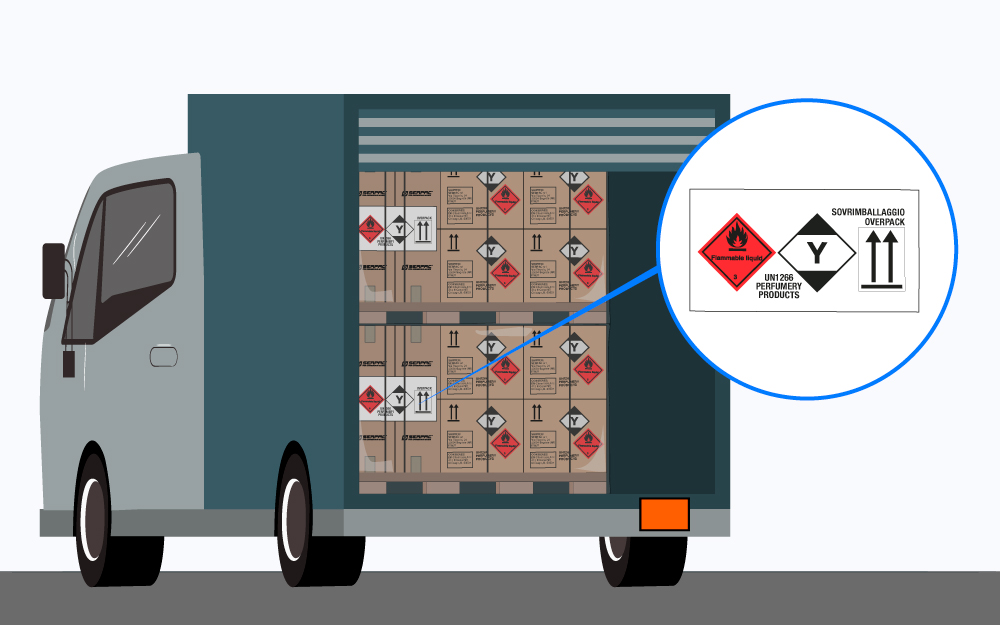Overpack: packaging without quality

It is true: overpack packaging shall not respond, by law, to any specific quality requirement.
The dangerous goods shipments world is complicated: you must plan and realize every detail in compliance with the rules given by the different regulations: ADR by road, RID by railroad, ADN by inland waterway, IMDG by sea, ICAO-TI/IATA by air. It all starts with the design of packaging that will be UN-approved later.
There is only one kind of packaging in the DG field that is disciplined only in its use and not in its shape or design: the so-called overpack.
What is, specifically, an overpack?
It is an enclosure used to contain one or more packages, consolidated into a single unit easier to handle and stow during carriage. The most common examples of overpacks are:
- A loading tray such as a pallet, on which several packages are placed or stacked and secured by a plastics strip, shrink or stretch wrapping or other appropriate means; or
- An outer protective packaging such as a box or a crate.
As we just mentioned, different DG transport regulations do not discipline overpack technical features but care about the practical use of these packaging. Even a fibreboard box or a wooden crate shall not be produced following the general packing requirements if used as an overpack.
Finally, we can confirm that:
- An overpack is packaging…without quality!
- An overpack is an enclosure … without quality
The correct use of overpacks
It is important to underline that every package containing DG inside an overpack shall be prepared in compliance with all the applicable dispositions of different regulations, and above all the functioning of every packaging shall not be compromised by the overpack. Basically, an overpack is useful only to better handle and stow DG packaging. It is fundamental that every package contained inside an overpack is correctly labeled and marked. The use of overpack does not exempt users from correctly signaling the packages contained inside.
In some cases, indicated in some specific packing instructions, it is indicated that an overpack must be leakproof, without anyways giving precise details about the quality of the material to be used or about the technical construction features.
Always signal the use of an overpack
Many people want to use boxes as overpacks to consolidate packages into a single unit easier to handle. Signaling is ruled in chapters ADR 5.1.2, RID 5.1.2, ADN 5.1.2, IMDG 5.1.2, and IATA 7.1.4. It is written that an overpack must be marked with the word “OVERPACK”, and the lettering shall be at least 12 mm high. The mark shall be in the official language of the country of origin and also, for international transports, in English, French, or German, unless agreed otherwise. This marking must be directly applied to the overpack, be it a box or a wrapped pallet.
An overpack shall be also marked with a UN number, and labeled as required for packages, for each item of dangerous goods contained in the overpack, unless UN numbers and labels representing all DG contained in the overpack are not visible from the outside. Each applicable mark or label only needs to be applied once.
Which products for an overpack?
Overpack boxes produced by Serpac are ideal to consolidate packages into single units and can be tailor-made. Even where a specific quality standard is not required, Serpac relies on common sense and always aims at the top, to avoid any possible mistake or accident. A fundamental aspect to consider is the transport and stowage system. There is indeed no specific requirement to comply with, but the Serpac working team knows that stocking more overpacks during stowage or transport is something to take care of. Serpac offers a specific set of products to overpack packages ready to ship dangerous goods efficiently, quickly, and in compliance with the user's requests, always paying attention to quality.
Safety calls, Serpac responds!